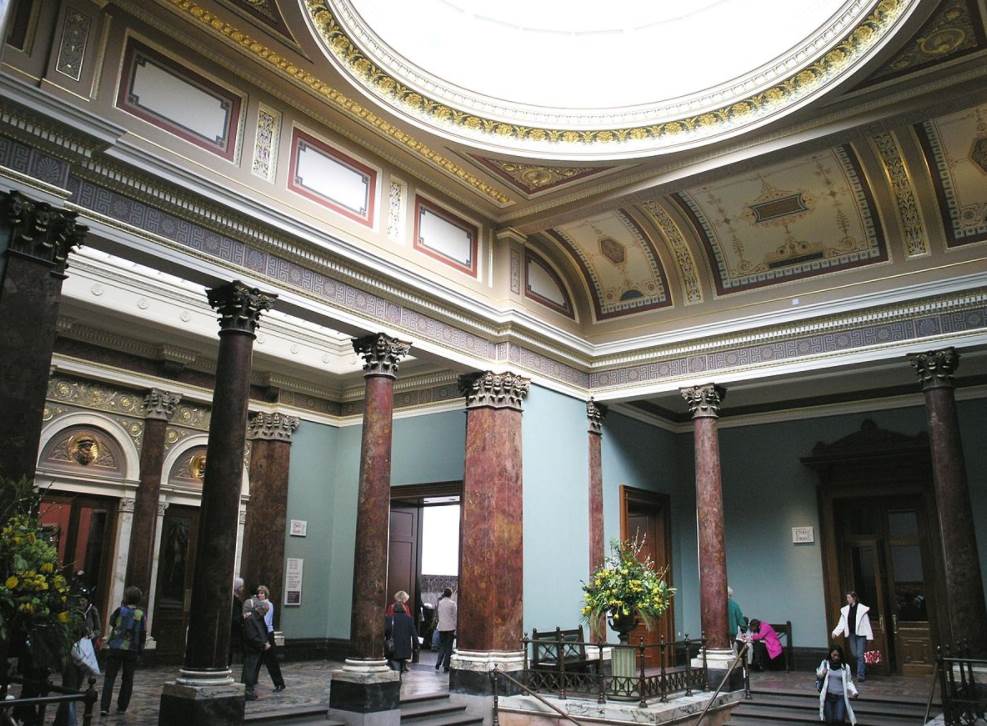Paintings of monumental scale, vivid colors, and numerous figures. This pretty much defines the works of Veronese (1528-1588), a Mannerist artist and one of the greatest artists of the 16th-century Venetian School.
Paolo Veronese didn’t go overboard with colorization in this work called “The Family of Darius Before Alexander,” but it does fit this grandiose description. Let’s take a closer look at some of the most interesting facts about this remarkable work of art.
1. It was painted in the second half of the 1560s
The Family Of Darius Before Alexander is one of the most famous works in the rich oeuvre of Paolo Veronese. It was painted between 1565 and 1570, most probably for the Pisani Family, a rich family who originally came from Pisa but who were also prominent in Venice.
Veronese made countless preparatory sketches for this monumental work of art and completed it between 1565 and 1570.
This means that he started it a few years after he completed “The Wedding at Cana,” one of his masterpieces at the Louvre. He finished it a few years before he started working on “The Feast in the House of Levi,” two of his best-known works.
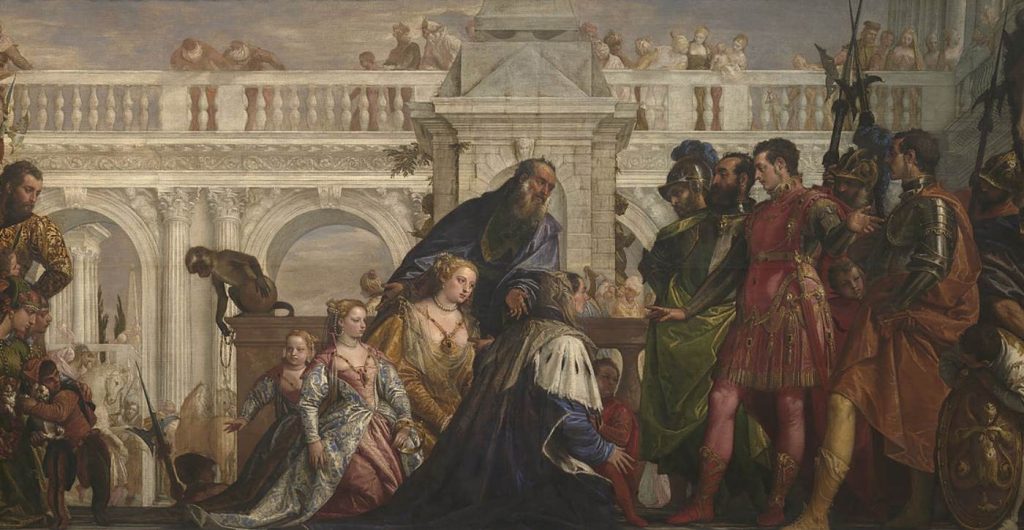
2. It depicts a scene in the aftermath of a battle in the 4th century B.C.
The family to whom the title refers is that of Darius III, the last Achaemenid king of Persia. Alexander the Great defeated him in battle in the year 333 B.C.
Darius isn’t depicted because he managed to escape. This means that the depicted women are his wife Stateira I, his mother Sisygambis, and his daughters Stateira II and Drypetis were.
The scene depicts the moment in which the family of Darius III is presented to Alexander the Great (356-323 B.C.), the king of the ancient Greek kingdom of Macedon and one of the greatest military leaders in history.
3. There’s a duality about the confusion with Alexander’s identity
What’s remarkable about The Family of Darius Before Alexander is that art historians have consistently argued about the true identity of Alexander the Great in the painting.
This fact alone isn’t unthinkable, after all, there isn’t a clear description explaining who is who. What’s fascinating is that Darius’ mother Sisygambis, presumably kneeled to the assistant and childhood friend of Alexander, a man named Hephaestion.
This adds to the confusion as it remains unclear until today whether or not the man in red is Alexander or his friend.
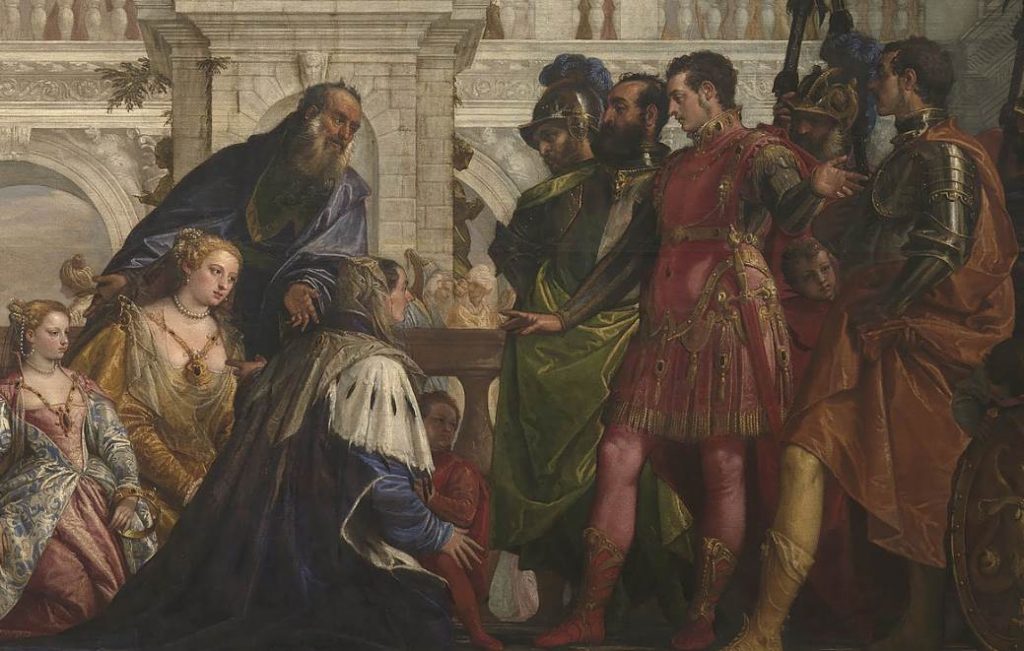
4. It’s possible that the painter included himelf as well
As with most other paintings by Veronese, he included numerous figures in both the foreground and the background. The architectural element in the background around which the composition is centered is another trademark by the artist.
Because most Venetian paintings from this period in history include real people, many suggestions have been made as to who is depicted in this painting as well.
Some historians have suggested that the figures were members of the Pisani family who commissioned the painting. Others have suggested that the little girls were Veronese’s daughters.
It has also been suggested that Veronese included himself as well (something he did before in The Wedding at Cana), but it remains uncertain who. Opinions range from the man presenting the family to Alexander to the man standing just behind him.
5. It was bought by a museum in London for a huge amount in the 1850s
Even though Veronese was one of the greatest Venetian artists of the 16th century, not all his paintings remained in the city. It’s assumed that this work originally decorated the Villa Pisani in Montagnana, a ton in the province of Padova, not too far from Venice.
It’s unclear when the painting was moved to Venice, but it eventually ended up at the Palazzo Pisani Moretta along the Grand Canal in Venice. It’s here that the painting started drawing attention as one of the greatest masterpieces in the city.
This attention eventually spread to London, and more specifically, the National Gallery, one of the biggest art museums in the city located at Trafalgar Square. They eventually managed to buy the work from the Pisani family for £13,650 in 1856, the equivalent of over £1,500,000 today.
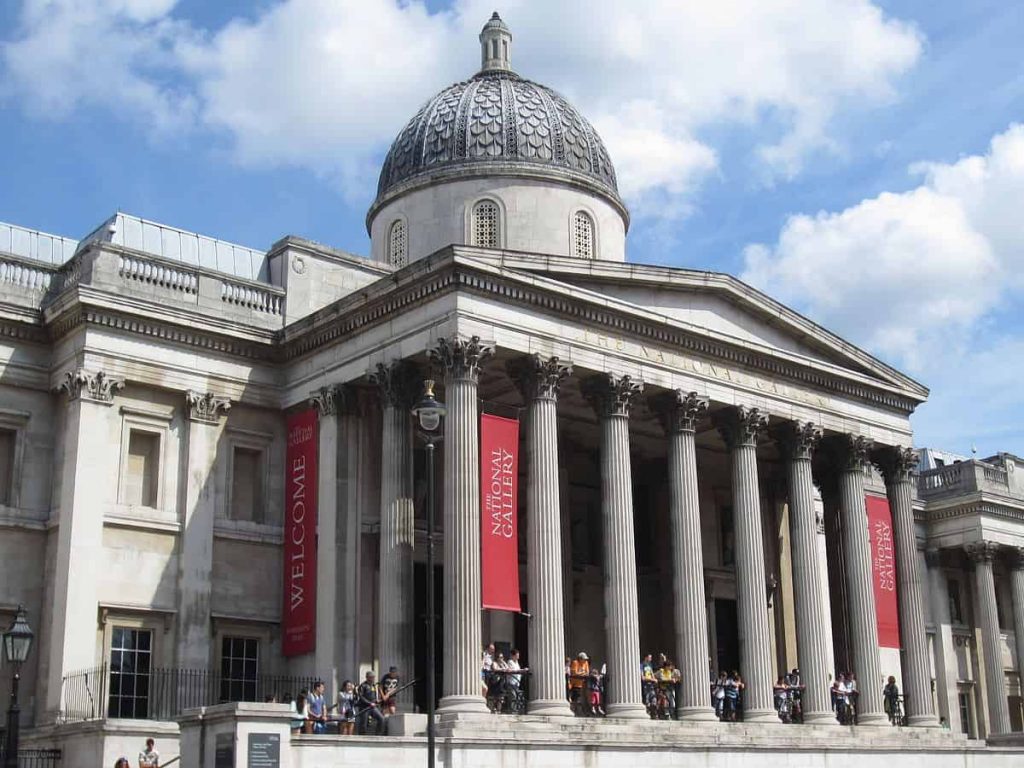
More interesting facts about The Family of Darius Before Alexander
6. Even though this work is far from the largest painting in the oeuvre of Paolo Veronese, it’s still pretty big as it has dimensions of 236.2 × 475.9 centimeters (93.0 × 187.4 inches).
This is still significantly smaller than his most famous works, The Wedding at Cana with dimensions of 677 × 994 centimeters (267 × 391 inches), and the Feast of the House of Levi with dimensions of 560 × 1,309 centimeters (220 × 515 inches).
7. The story about The Family of Darius Before Alexander helped to shape the reputation of Alexander the Great. Instead of taking advantage of the vulnerable women, he continued to treat them as royals.
Darius’ wife Stateira I was historically described as a very beautiful woman as well. Ancient Greek historian Plutarch wrote about this: “Alexander, esteeming it more kingly to govern himself than to conquer his enemies, sought no intimacy with any of them.”
8. Veronese depicted the event taking place in what appears to be a Venetian Palace, contrary to the fact that this meeting took place in a tent that the women were staying in following the defeat of Darius III.
The amazing clothes worn by the main figures and even the figures in the background also resemble the style of Venetian fashion of the 16th century as opposed to a Macedonian or Persian wardrobe from the 4th century B.C.
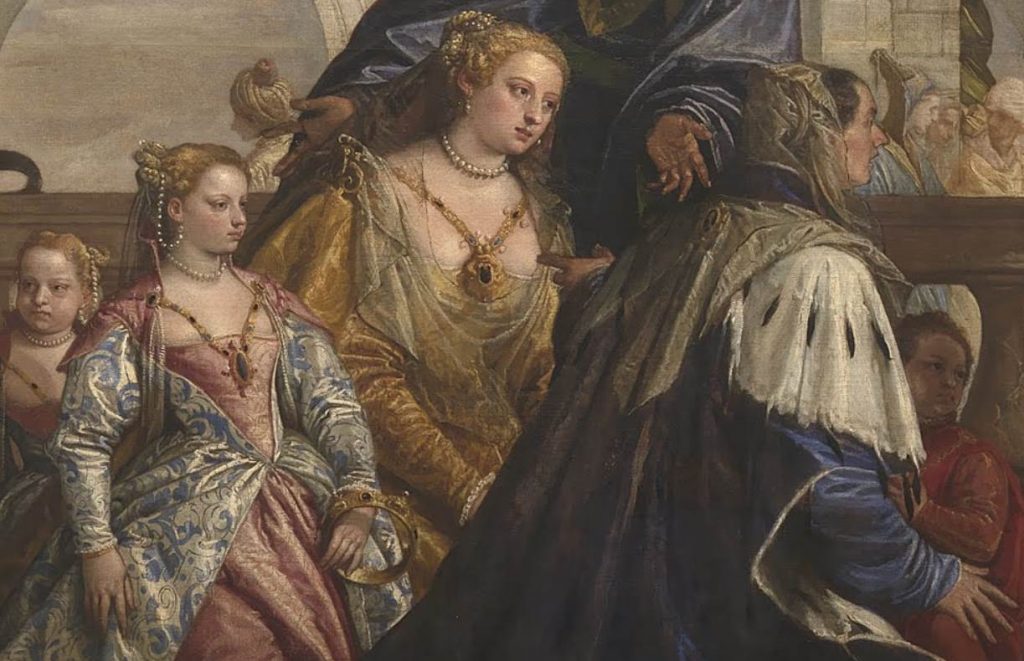
9. Alexander the Great didn’t take offense to the fact that the mother of Darius III, Sisygambis, mistakenly identified his taller assistant Hephaestion for himself.
A historian named Quintus Curtius Rufus who lived in the 1st century A.D. and who wrote a work called “The History of Alexander the Great” referred to this incident. He mentioned that Alexander simply said that “Hephaestion is Alexander too,” something that instantly revealed the nervous woman.
10. The management of the National Gallery wasn’t the first entity to take interest in this magnificent painting. The first to take note of the painting was Christina, Queen of Sweden (1626-1689), who sent agents to Venice to negotiate a potential sale at the Palazzo Pisani Moretta.
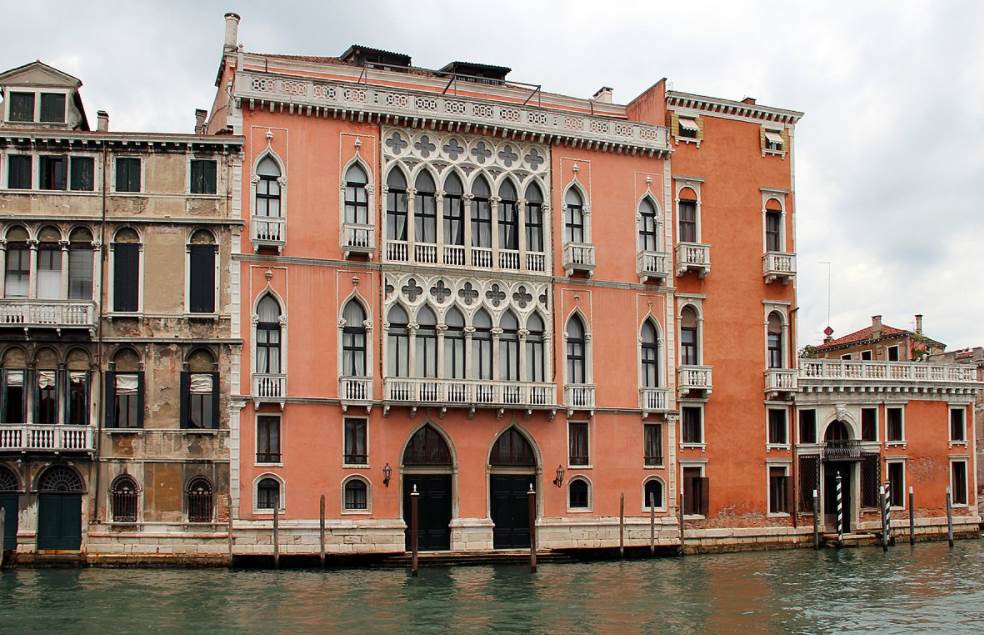
When the Pisani Family set the price at 5,000 ducats, the interest quickly faded and numerous copies were made. Some of these copies were sold for a price of just 80 ducats at the time.
11. The painting was examined on October 14, 1856, by the director of the National Gallery in London at the time, a man named Charles Lock Eastlake (1793-1865).
Shortly after, the huge sum of £13,650 was paid, and the painting was brought to London in 1857, regardless of the objections by some members of the House of Commons of the United Kingdom at the time who thought that the price was way too high.
12. The Family of Darius Before Alexander isn’t the only painting of Veronese at the National Gallery in London. A total of 10 works of the artist can be admired here, including “The Adoration of the Kings,” and “The Conversion of Mary Magdalene” to name just a few.
